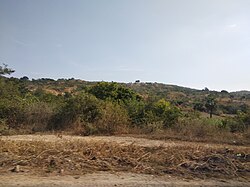| UTC time | 1946-09-12 15:17:23 |
|---|---|
| 1946-09-12 15:20:28 | |
| ISC event | 898579 |
| 898580 | |
| USGS-ANSS | ComCat |
| ComCat | |
| Local date | September 12, 1946 |
| Magnitude | 7.3 Mw , 7.9 Ms [1] |
| 7.7 Mw , [1] 7.8 Ms [2] | |
| Depth | 15.0 km |
| Epicenter | 22°21′N96°14′E / 22.35°N 96.24°E |
| Fault | Sagaing Fault |
| Type | Strike-slip |
The 1946 Sagaing earthquakes (also known as the Wuntho earthquakes) struck central Burma at 15:17 local time on 12 September. [3] The first earthquake measured a magnitude of 7.3 Mw and was followed by a 7.7 Mw earthquake. Both events remain some of the largest in the country since the 1762 Arakan earthquake. [3] [4]


